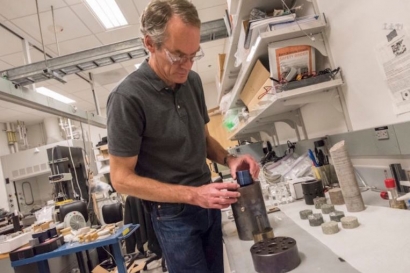
Berkeley Lab will partner with seven other DOE national labs and six universities to develop field experiments focused on understanding and modeling rock fractures, an essential element of geothermal systems.
Scientists will use the Sanford Underground Research Facility in South Dakota to create small-scale fracture networks in crystalline rock 1,500 meters below ground.
“We will be putting instrumentation within tens of meters of the fractures and will be able to detect fracturing at a higher resolution than what has ever been done before,” said Berkeley Lab’s Tim Kneafsey, who leads the project.
“The goal is to work towards increasing our understanding of fracturing and fluid flow in EGS, which could provide a significant amount of electricity as a large quantity of accessible hot rock lies untapped across the U.S,” Kneafsey added.
In geothermal systems, heat acquired from water circulating in rock fractures deep in the Earth’s crust is extracted for conversion to electricity. Conventional geothermal technology is possible only in locations with particular geological characteristics, either near active volcanic centers or in places with a very high temperature gradient, such as much of Nevada and parts of the western United States.
These locations have the three components essential to extracting geothermal energy—heat, fluid, and permeability, a measure of how easily fluid can circulate through the rock’s fractures, picking up heat as it moves.
With EGS, a fracture network can be enhanced or engineered, thus bypassing the geographic limitations of conventional geothermal energy. EGS could eventually provide more than 100 GW of economically viable electric generating capacity in the continental United States, a huge increase over the current geothermal capacity of 3.5 GW.
“Although geothermal energy production is already used effectively, there is a lot we need to learn about how to create and develop an EGS reservoir,” Kneafsey said. “This project will seek to understand the relationship between permeability creation and heat extraction in crystalline rocks under certain stress and temperature conditions.”
Photo caption: Berkeley Lab scientist Tim Kneafsey demonstrates how he places rock samples, from the Brady Geothermal Field in Nevada, into a stress permeability apparatus, which tests how long a fracture can remain open. (Credit: Marilyn Chung/Berkeley Lab)
For additional information:

